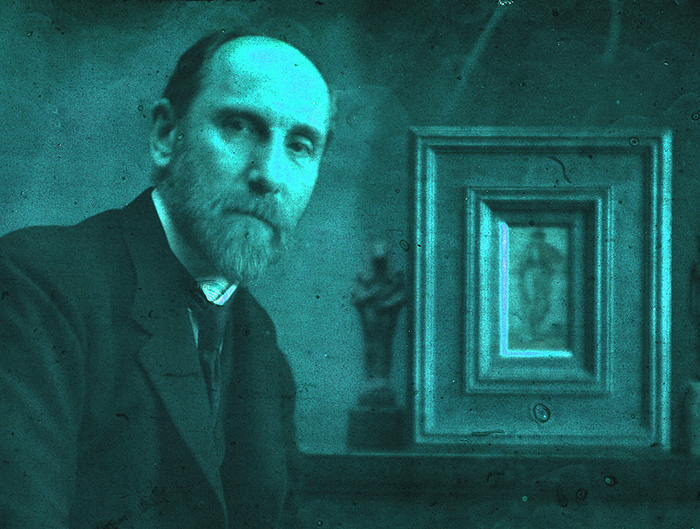Art, Medicine and Disability: Faculty Research Lunch Series Opens With Fresh Look at Freer Collection

Charles Lang Freer, a Gilded Age railroad industrialist, left his spectacular art collection to the Smithsonian. It's now housed in the Freer Gallery of Art.
Virtual lecture series brings new research to college community
by MaryAlice Bitts-Jackson
If you’ve visited the Freer Gallery of Art in Washington, D.C., you’ve witnessed the enduring legacy of one man, the Gilded Age railroad industrialist Charles Lang Freer. Despite the serious illness that he suffered in adulthood, Freer traveled the world to acquire art that spoke to him, and before his death in 1919, he left his substantial collection to the Smithsonian Institution for generations to enjoy.
On Sept. 22, Elizabeth Lee, associate professor of art history, shared her scholarship on Freer, disability and art with the Dickinson community during Dickinson’s Faculty Research Lunch. Hosted monthly by Dickinson’s Women’s & Gender Resource Center, this now-virtual event brings faculty members together via Zoom each month to share and discuss recent and current work.
During her presentation, Lee outlined clues to Freer's diagnosis of syphilis, as opposed to nervous exhaustion, with which he’s commonly associated. She added that while most, if not all, of Freer’s contemporaries collected art for its prestige or investment value, Freer sought out beautiful works that calmed his anxious mind.
In this way, Freer’s disability may have influenced his collection process and the objects he selected in profound ways.
“Freer took refuge in his objects. He was trying to figure out himself and his life. He was trying to find something meaningful,” says Lee, noting that Freer regarded his collection as a completion or extension of himself, much as a prosthetic. “I think it’s a powerful tale of why some people collect.”
It's also a tale for our times. According to Lee, because Freer was unable to physically connect with others because of his illness, his collection became “a site of safe tactility”—a concept that resonates now just as it may have during his lifetime, as diseases like tuberculosis, syphilis and the last century’s global flu pandemic swept the population.
Lee's book, Medicine of Art: Disease and the Aesthetic Object in Gilded-Age America, will be published by Bloomsbury Academic Press in 2021. An excerpt on painter Abbott Thayer, whose work changed dramatically after the death of his wife from tuberculosis, was recently published in Fast Company.
Upcoming Faculty Research Lunches will feature the recent work of Rachel Jacobs, assistant professor of political science and international studies (Thursday, Oct. 22) and Amalia Pesantes Villa, assistant professor of anthropology (Nov. 19). Registration is required.
TAKE THE NEXT STEPS
Published September 23, 2020